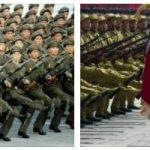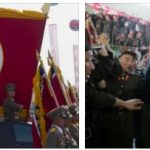
Economy
Economy overview: As one of the “four dragons” of East Asia, South Korea has achieved incredible results in economic growth. Three decades ago, its GDP per capita was comparable to that of the poorest countries in Africa and Asia. Today’s GDP per capita in South Korea is 7 times that of India, 13 times that of North Korea, and is comparable to that of the smaller countries of the European Union. This success in the late 1980s was achieved thanks to a system of close ties between the state and business, which included a number of measures, such as targeted loans, restrictions on the import of imports, financial injections into certain industries and hard work. The government encouraged imports of raw materials and technology at the expense of consumer goods and encouraged savings and investment rather than consumption. Asian financial crisis 1997-99 exposed weaknesses in the South Korean development model, including high corporate debt-to-equity ratios, heavy foreign borrowing, and a lack of discipline in the financial sector. By 1999, growth, after a significant decline in 1998, resumed. The government is also putting pressure on the country’s largest corporations to restructure and strengthen their financial base. Growth in 2001 is likely to be 5%. See topb2bwebsites.com to know more about South Korea in 2004.
GDP: at purchasing power parity – $764.6 billion (2000 est.).
Real GDP growth rate: 9% (2000 est.).
GDP per capita: at purchasing power parity – $16,100 (2000 est.).
The composition of GDP by sectors of the economy: agriculture: 5.6%; industry: 41.4%; services: 53% (1999 est.).
Proportion of the population below the poverty line: no data available.
Percentage distribution of household income or consumption: per 10% of the poorest families: 2.9%; by the top 10% of families: 24.3% (1993).
Inflation rate at consumer prices: 2.3% (2000).
Labor force: 22 million people (2000).
Employment structure: services and other industries 68%, mining and manufacturing 20%, agriculture, fishing, forestry 12% (1999).
Unemployment rate: 4.1% (2000 est.).
Budget: revenues: $81.8 billion; expenses: $94.9 billion, including capital investments – $6.1 billion (1999).
Economic sectors: electronics, automobiles, chemicals, shipbuilding, steel, textiles, clothing, footwear, food processing.
Growth in industrial production: 17% (1999 est.).
Electricity generation: 250.287 billion kWh (1999)
Sources of electricity generation: fossil fuels: 59.22%; hydropower: 1.64%; nuclear fuel: 39.12%; others: 0.02% (1999).
Electricity consumption: 232.767 billion kWh (1999)
Electricity export: 0 kWh (1999).
Electricity import: 0 kWh (1999).
Agricultural products: rice, root crops, barley, vegetables, fruits; cattle, pigs, chickens, milk, eggs; fish.
Export: $172.6 billion (free on board, 2000)
Exports: electronics products, machinery and equipment, automobiles, steel, ships; fabrics, clothing, shoes; fish.
Export partners: USA 20.5%, Japan 11%, China 9.5%, Hong Kong 6.3%, Taiwan 4.4% (1999).
Imports: $160.5 billion (free on board, 2000)
Imports: machinery, electronics and electronic equipment, petroleum, steel, transport equipment, textiles, organic chemicals, grains.
Import partners: USA 20.8%, Japan 20.2%, China 7.4%, Saudi Arabia 4.7%, Australia 3.9% (1999).
External debt: $137 billion (November 2000)
Economic aid donor:
Currency: South Korean Won.
Currency code: KRW.
Exchange rate: KRW/USD – 1,271.89 (January 2001), 1,130.96 (2000), 1,188.82 (1999), 1,401.44 (1998), 951.29 (1997), 804.45 (1996).
Fiscal year: calendar year.
Telecommunications
Telecommunications Telephone lines: 24 million (1999).
Mobile cell phones: 27 million (2000).
Telephone system: excellent domestic and international communications; internal: no data; international: fiber optic submarine cable to China; submarine cable Russia – Korea – Japan; satellite earth stations – 3 Intelsat (2 Pacific and 1 Indian Ocean) and 1 Inmarsat (Pacific region).
Broadcast stations: AM – 106, FM – 97, shortwave – 6 (1999).
Radio receivers: 47.5 million (1997)
Television broadcast stations: 121 (and 850 relay stations and eight channels of the US Forces Broadcasting Network in Korea) (1999).
Televisions: 15.9 million (1997)
Internet country code: kr
Internet service providers: 11 (2000).
Number of users: 15.3 million (2000).
Transport
Transport Railways: total: 6,240 km; standard gauge: 6,240 km (1.435 m gauge) (525 km electrified) (1998 est.).
Roads: total: 87,534 km; paved: 65,388 km (including 1,996 km of expressways); unpaved: 22,146 km (1999)
Waterways: 1,609 km; used only by small local courts.
Pipelines: for oil products – 455 km; note – in addition, the laying of a parallel pipeline for oil, oil and lubricants has been completed.
Ports and harbours: Incheon (Chemulpo), Yeosu, Kun-san, Masan, Mokpo, Busan, Pohang, Tonghae Khan (Tonghae-hang), Ulsan, Jinhae.
Merchant navy: in total: 496 ships (of 1,000 tons displacement or more) with a total displacement of 5,421,993 gross register tons / 8,757,134 long tons of gross tonnage; ships of various types: bulk carriers – 105, cargo ships – 168, chemical tankers – 38, combination carriers – 5, container ships – 49, liquefied gas tankers – 16, multifunctional heavy cargo ships – 1, passenger ships – 3, oil tankers – 70, refrigerated ships – 27, ferries – 4, coastal passenger ships – 1, specialized tankers – 4, transport cargo ships – 5 (2000 est.).
Airports: 102 (2000 est.).
Airports with paved runways: total: 68; over 3,047 m: 2; from 2438 to 3047 m: 18; from 1,524 to 2,437 m: 16; from 914 to 1523 m:11; less than 914 m: 21 (2000 est.).
Airports with unpaved runways: total: 34; from 914 to 1,523 m: 2; less than 914 m: 32 (2000 est.). Helipads: 203 (2000 est.).
Armed forces
Branches of the Armed Forces: Army, Navy, Air Force, Marine Corps, National Maritime Police (Coast Guard).
Enlistment age: 18 years old.
Total Military Manpower: Male 15 to 49: 14,148,552 (2001 est.).
Eligible for military service: men aged 15 to 49: 8,979,778 (2001 est.).
Number of persons reaching military age each year: men: 394,397 (2001 est.).
Military spending in dollar terms: $12 billion (2000)
Military spending as part of GDP: 3.2% (1998).
International Issues
International issues International disputes: demarcation line with North Korea; Japan disputes the ownership of the Liancourt Rocks (Takeshima/Tokdo).







